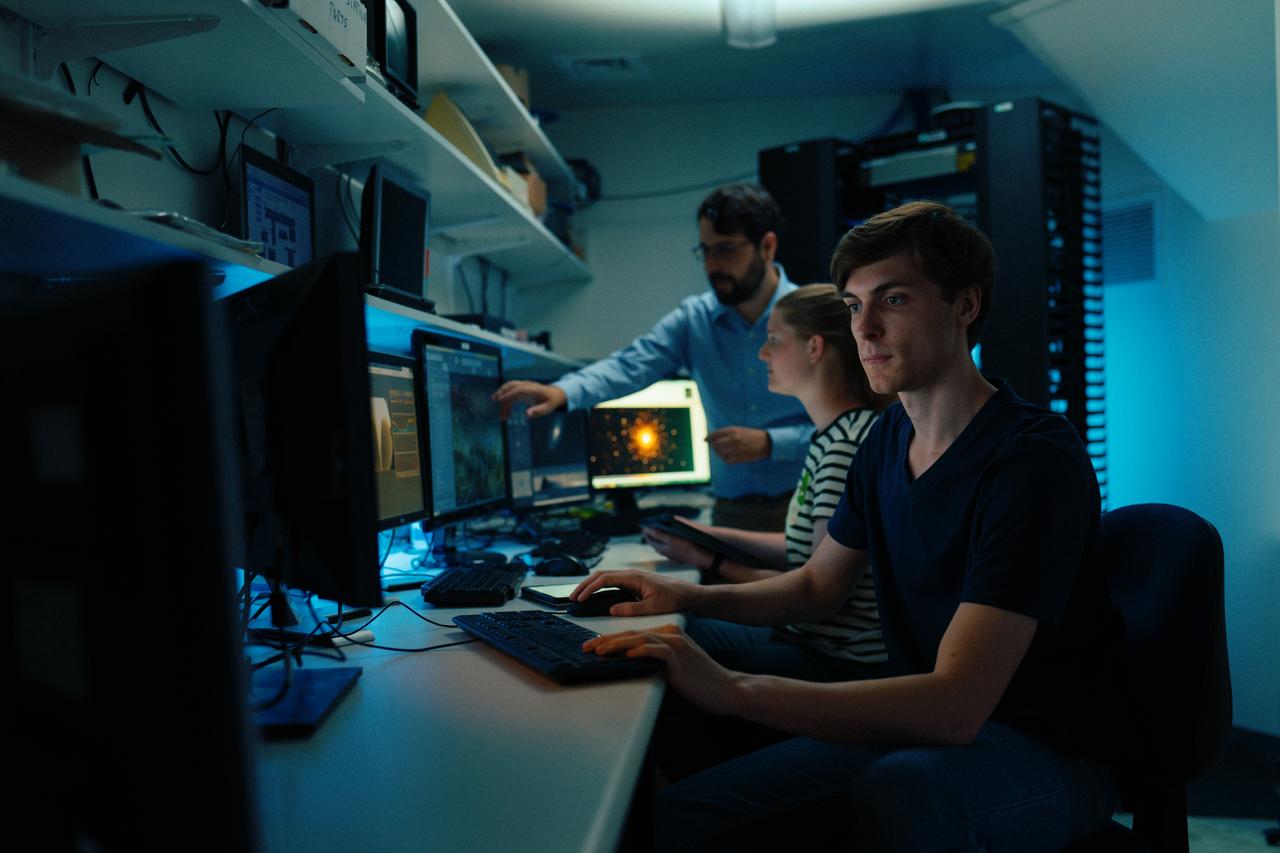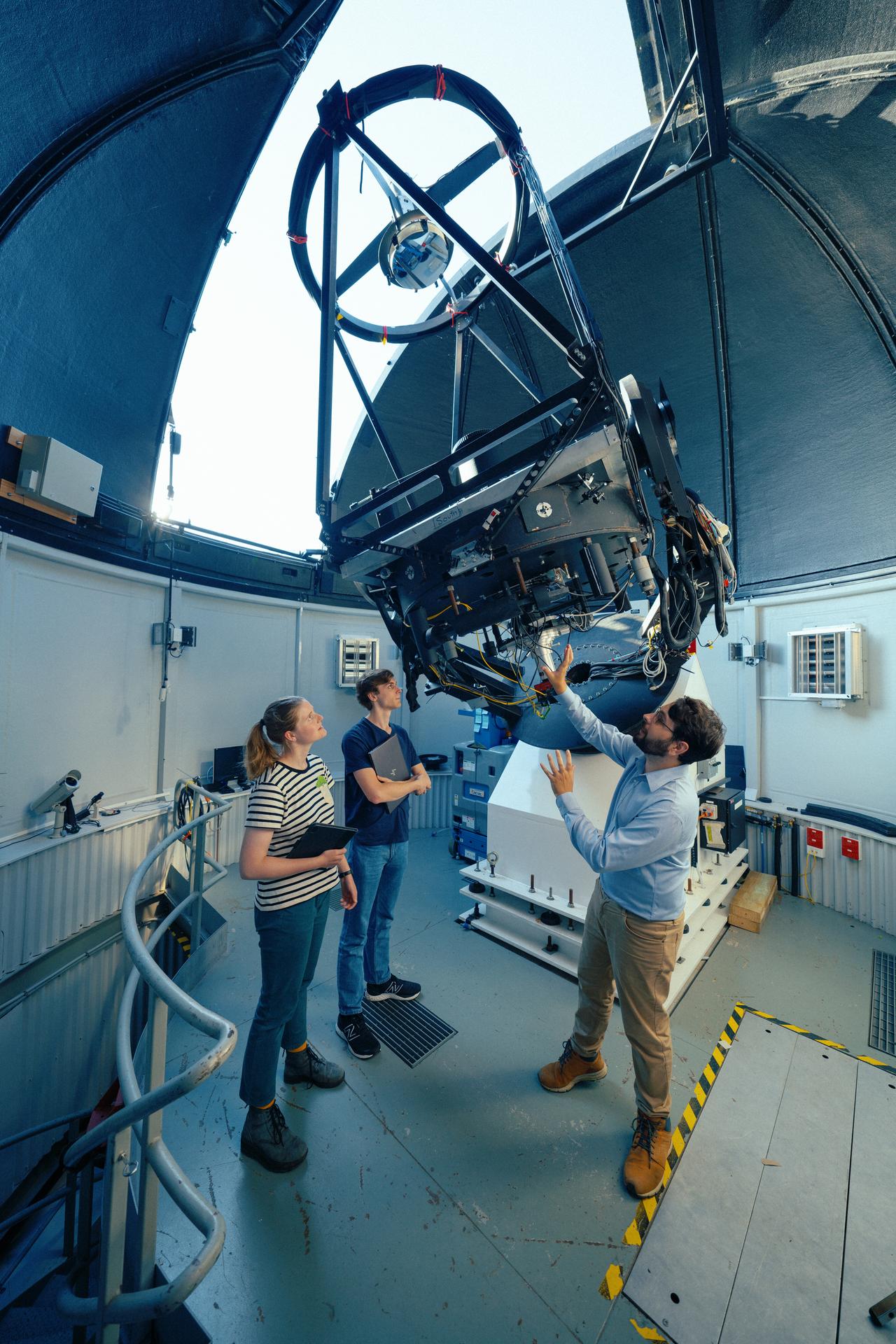One inch too tall to be an astronaut, Euan Hamdorf abandoned his childhood dream of going to space quite some time ago. But now his astrophysics research is giving him a different way to reach the stars.
A childhood interest in mathematics and science exploded into an obsession with astronomy when Euan discovered YouTube in high school and suddenly found himself hooked on space documentaries.
He is currently studying his Bachelor of Science with Honours in Astrophysics at the University of Tasmania in Hobart and has recently completed a summer research project tracking asteroids with the University’s 50cm optical telescope.
“I was always pretty good at maths and science in school and also wanted to know why things are the way they are, and why there are the things that there are,” he said.
“I was in high school when I really discovered astronomy, though. They let me on a computer with an internet connection and I just started diving into all these great YouTube channels about astronomy by people like Neil deGrasse Tyson and Carl Sagan, and I was hooked.”

Euan, 21, has already completed his Bachelor of Science with majors in mathematics and physics. And prior to commencing his Honours program in 2023, he spent the summer working on a research project that will serve as a perfect springboard into his astrophysics specialisation.
The research also allowed him to get hands-on with part of the University of Tasmania’s enviable array of optical and radio telescope systems.
“At the end of 2022 the University upgraded the 50cm optical telescope at the Greenhill Observatory and my job was to do a project that would test the speed and tracking capabilities of the new mount,” he said.
“So I was tracking asteroids, which move quickly through the skies. And using the telescope I was able to follow them, as well as confirm things like how fast they rotate by measuring how their brightness changes over periods of time.
“I love the immediacy of optical astronomy, and that the images you get are basically what you’d see with your own eye. At the end of our observations each night, we often found a little time to just take a few images of other things in the sky for fun.”

The University operates two radio telescopes – 26m and 14m antennas – at its Mt Pleasant observatory site near Dulcot in the Coal River Valley. Meanwhile, our Greenhill Observatory at Bisdee Tier, near Jericho, boasts a 1.27m optical telescope, a 50cm optical telescope, and a new 7.3m radio antenna that will provide two-way communications between Earth and low-Earth-orbit satellites, the southernmost antenna of its kind in the world.
And our observatories are part of a national network of radio telescopes that includes the AuScope array (comprising identical 12m radio telescopes in Western Australia, the Northern Territory and at Mt Pleasant Observatory in Tasmania) and the 30m Ceduna Radio Antenna in South Australia.
We have been tracking, monitoring and studying space since 1985 and today we provide commercial and scientific support to explore near and deep space. From our small island, we have supported landings on Titan, tracking for lunar missions, and orbit determination of spacecraft.
“Other unis on the mainland have their own telescopes as well but a lot of them are a fair way from the city centre. Here in Tassie they’re all just a short drive out of Hobart, which is amazing,” Euan said.
Euan plans to continue working in optical astronomy for his Honours research, which will focus on detecting other planets – exoplanets – outside of our solar system.
Euan plans to continue in astrophysics research after completing Honours, aiming to eventually complete a PhD in the field.
“I want to keep asking questions. And there have been lots of people from this physics school who have gone on to have groundbreaking research papers published, some have gone on to work in places like NASA.
“I’m 6’5”, so I’m one inch too tall to be an astronaut. But if NASA wanted to give me a job in some research field, I’d absolutely jump at it.”
Physics is the “why” of everything. It helps us to observe, understand, and explain connections in our world and the wider universe. Studying Science at the University of Tasmania provides plenty of opportunities for curious minds.


